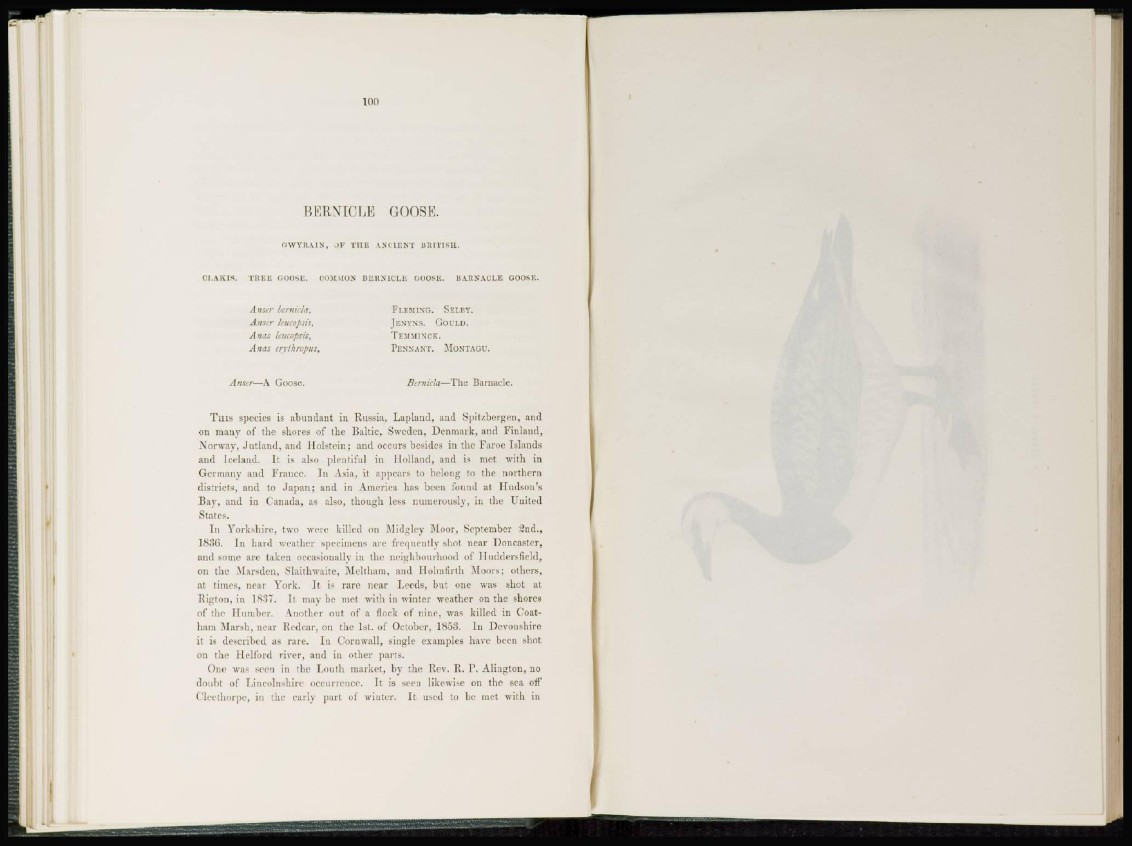
BERNICLE GOOSE.
G W Y R A I N , OF T H E A N C I E N T BRITISH.
C L A K I S , TREK GOOSE. COMMON B E R N I C L E GOOSE. BARNACLE GOOSE.
A user bernida,
Anser leucopsis.
Anas leucopsis,
Anas erythropus,
FLEMING. SELBT.
JENYNS. GOULD.
TEMMTNCK.
PENNANT. MONTAGU.
Anser—A Goose. Bernicla—The Barnacle.
T i n s species is abundant in Russia, Lapland, and Spitzbergen, and
on many of the shores of the Baltic, Sweden, Denmark, and Finland,
Xorwav. Jutland, and Holstein; and occurs besides in the Faroe Islands
and Iceland. It is also plentiful in Holland, and is met with in
Germany and France. In Asia, it appears to belong to the northern
districts, and to Japan; and in America has been found at Hudson's
Bay, and in Canada, as also, though less numerously, in the United
States.
I n Yorkshire, two were killed on Midgley Moor, September 2nd.,
1836. In hard weather specimens are frequently shot near Doncaster,
and some are taken occasionally in the neighbourhood of lluddersfield,
on the Marsden, Slaithwaite, Meltham, and Holmfirth Moors; others,
at times, near York. It is rare near Leeds, but one was shot at
Rigton, in 1837. It m a y b e met with in winter weather on the shores
of the Humber. Another out of a flock of nine, was killed in Coatham
Marsh, near Redcar, on the 1st. of October, 1853. In Devonshire
it is described as rare. In Cornwall, single examples have been shot
on the Helford river, and in other parts.
One was seen in the Louth market, by the Rev. R. F. Alington, no
doubt of Lincolnshire occurrence. It is seen likewise on the sea off
Cleethorpe, in the early part of winter. It used to be met with in